Artificial intelligence has brought numerous advancements to modern businesses. One such advancement is the development of chatbots — programs that solve various tasks via automated messaging.
Perhaps the most popular application of chatbots is virtual customer service in commercial enterprises. Chatbot technology first appeared more than 40 years ago but only recently gained extreme popularity due to multiple commercial benefits and excellent communication capabilities. Customers praise the comfort of using virtual assistants that have become more intelligent and human-like without annoying communication weaknesses often associated with humans.
So, does your business need a robust AI chatbot? What benefits can it bring? Continue reading to find these answers and get a step-by-step tutorial on how to build a chatbot in Python.
5 Types of Chatbots
A chatbot is an Artificial Intelligence (AI) based software that simulates human conversation. It analyzes the user request and outputs relevant information. Modern chatbots are called digital assistants and can solve many tasks. They are mainly used for customer support but can also be used for optimizing inner processes.
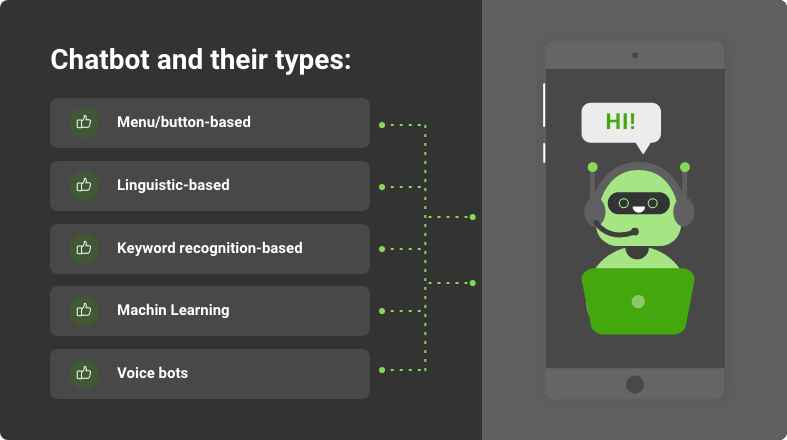
Types of Chatbots
Here are a few main chatbot types that vary in technology and functionalities:
1. Menu/button-based
This is the most basic type. It utilizes a decision tree hierarchy presented to a user as a list of buttons. Using the menu, customers can select the option they need and get the proper instructions to solve their problem or get the required information. This type of chatbots is widely used to answer FAQs, which make up about 80% of all support requests.
2. Rule-based
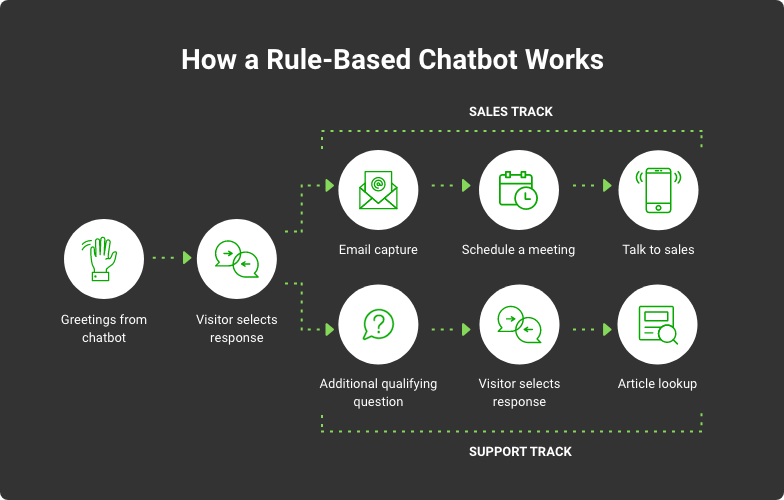
Rule-Based Chatbot
Rule-based chatbots are also called linguistic. It uses a collection of different conditions to assess the incoming words, detect specific word combinations, and form a response based on if/then logic. If the input matches the defined conditions, a chatbot outputs a relevant answer.
3. Keyword recognition-based
It uses Natural Language Processing (NLP) algorithms to form answers based on the detected keywords. Often it is combined with the menu/button-based option to give customers a choice if the keyword recognition mechanism outputs poor results.
4. ML-based
These chatbots utilize various Machine Learning (ML), Deep Learning (DL), and Artificial Intelligence (AI) algorithms to remember past conversations and self-improve with time. They are also called contextual chatbots.
5. Voice bots
Apple’s Siri, Amazon’s Alexa, Google Assistant are the best examples of voice recognition-based bots. They make you feel like you are having a conversation with a human. You don’t need to type anything to get the required information or enable the required features. For now, these are the most complicated in implementation.
10 Chatbot Benefits For Business
Chatbots are one of the top points in the digital strategies of companies worldwide. Before 2019, virtual interactions with customers were optional. However, in 2020 brands were pushed to connect with and serve their customers online due to the pandemic. As a result, the global chatbot market value will steadily increase over the next several years. A Statista report projects chatbot market revenues to hit $83.4 million in 2021 and $454.8 million by 2027.

Global Chatbot Market Revenue from 2018 to 2027
According to Fortune Business Insights research, the global chatbot market size will reach $1,953.3M by 2027 at a CAGR of 22.5% in 2020-2027. Such tremendous growth is not without reason. Chatbots bring numerous benefits for both businesses and customers.
The end goal for commercial implementation of any technology is bringing money and saving money. And this is how chatbots help with it.
- Better lead generation and maintenance: a chatbot can qualify leads by asking relevant questions and nurture the qualified leads according to their customers’ journey.
- 24/7 automated customer support: no wait time and no request queues during business hours.
- Reduced customer service cost: there is no need to hire and train human support agents. According to different surveys, the companies can save up to 35% on customer service costs.
- Higher customer engagement: a recent HubSpot study shows that 71% of people like getting assistance from messaging apps. People prefer texting to calling and tend to use a service more actively when getting timely, comfortable aid.
- Less time for information-based requests: chatbots filter customer requests before the team gets them, reducing the human resources and time needed for their processing.
- More straightforward support scalability: while a human can handle 2 to 3 conversations simultaneously, chatbots can manage thousands of conversations. Regardless of the workloads, chatbots are easily scalable without increasing the business costs.
- Better team productivity: as with any automation tool, chatbots reduce the workloads and help manage more tasks within the same time. You can automate your customer service and sales processes with a chatbot. While it performs standard duties like informing customers about order status, delivery time, and other common queries, the team can concentrate on higher-end processes.
- Higher customer satisfaction: chatbots can become a powerful channel for proactive communication with clients, providing them with relevant, personalized information on time. Moreover, it is much cheaper to provide multilingual customer support by a chatbot than by humans.
- Less human errors: another advantage of automation is eliminating the human-factor issues like mistakes in sharing product details, service pricing, etc. Properly programmed chatbots automatically provide the requested information correctly.
- Hybrid customer experience: companies practice switching conversations between a bot and live chat seamlessly. As a primary channel, a bot communicates with a customer until their questions require a more comprehensive discussion with a live person. It helps to optimize costs without sacrificing customer satisfaction.
Unsure about which type of chatbot best fits your business goals? Consult KeyUA experts to make the right choice.
Get A QuoteHow to Make a Chatbot in Python?
Many programming languages are currently used for chatbot development, including Python, Lisp, Java, Ruby, Clojure, etc. For the sake of clarity, let’s create a chatbot in Python with a contextual NLP algorithm inside. Python is a minimalistic language with simple syntax. Using the support of the most advanced AI libraries, it can be used for implementing sophisticated chatbot logic, AI-based algorithms, and self-training systems.
We will use a ChatterBot library that features ML-based algorithms to generate meaningful responses to users’ requests. Go through these steps to develop a Python-based chatbot from scratch. Let's look at a simple example of a chatbot that the Dataсamp training platform describes in its tutorials.
Step 1. Installation
Let’s start with installing a ChatterBot corpus. Each corpus is a prototype of different inputs and responses that a chatbot learns. Saved data is used for self-training. Run two installation commands in the terminal:
Then install Jupyter Notebook:
And import the Chatbot class of the chatterbot module.
Step 2. Creating Chatbot Instance
We will create a chatbot object to name the future chatbot:
Now we need to position the storage adapter. Storage adapters connect a specific storage unit. To set the storage adapter, we will assign it to the import path of the storage we’d like to use. In this case, it is SQL Storage Adapter that helps to connect chatbot to databases in SQL.
Now let’s position the logical adapter with a chatbot object. Logical adapters coordinate the logic. In Chatterbot, it picks responses for any input connected to it. The library allows using many logical adapters. We will use two, ‘BestMatch’ and ‘TimeLogicAdapter’:
Step 3. Chatbot Training
Within Chatterbot, training becomes an easy step that comes down to providing a conversation into the chatbot database. Given a set of data, the chatbot produces entries to the knowledge graph to properly represent input and output. We will import ‘ListTrainer,’ create its object by passing the ‘Chatbot’ object, and then call the ‘train()’ method by passing a set of sentences.
Step 4. Testing
This is the last stage of building a chatbot with Python. Running a test will check Kavana's bot conversational skills. Call the ‘get_responses()’ method of the ‘Chatbot’ instance.
Next, create a while loop. After the statement is passed into the loop, the chatbot will output the proper response from the database. ‘Bye’ or ‘bye’ statements will end the loop and stop the conversation.
Here is the result:
As you see, the conversation is not wholly accurate. It is a simple chatbot example to give you a general idea of making a chatbot with Python. With further training, this chatbot can achieve better conversational skills and output more relevant answers.
In real life, developing an intelligent, human-like chatbot requires a much more complex code with multiple technologies. However, Python provides all the capabilities to manage such projects. The success depends mainly on the talent and skills of the development team. Currently, a talent shortage is the main thing hampering the adoption of AI-based chatbots worldwide. The demand for this technology surpasses the available intellectual supply.
Conclusion
Today’s AI- and ML-based chatbots give plenty of capabilities to improve customers’ satisfaction, boost loyalty to a brand, and optimize the time and money needed to run a business successfully. Here you’ve seen one of the multiple ways to develop chatbots using Python to understand this technology's basic principles. Real chatbots can fulfill significantly more complex scenarios.
If your company aims to provide customers with such an experience, KeyUA experts are available to build your chatbot based on Python or any other language that fits the project requirements. Depending on your communication channels, we can integrate a chatbot into your website, mobile application, and social network accounts to provide a complete connection with your customers.
Let’s level-up your customer support experience and strengthen your brand’s loyalty using the most advanced chatbot technologies.
Entrust your business chatbot development to the top experienced software engineers.
Contact KeyUA


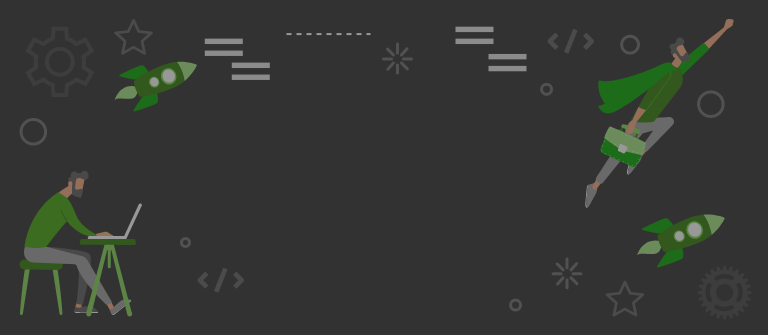
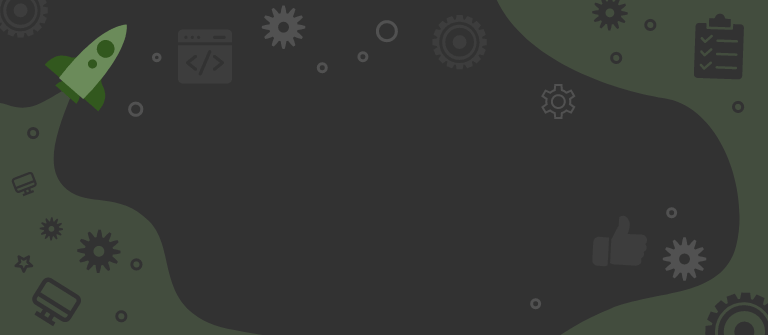
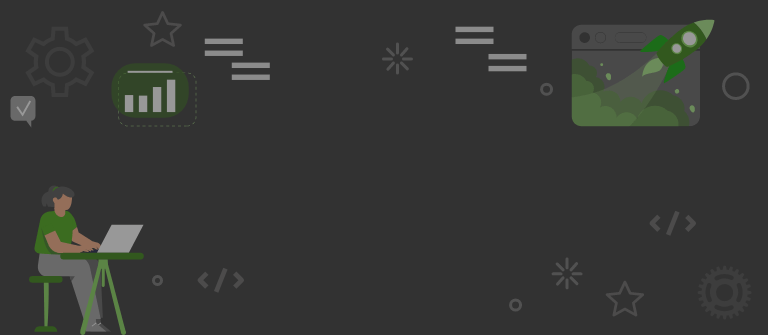
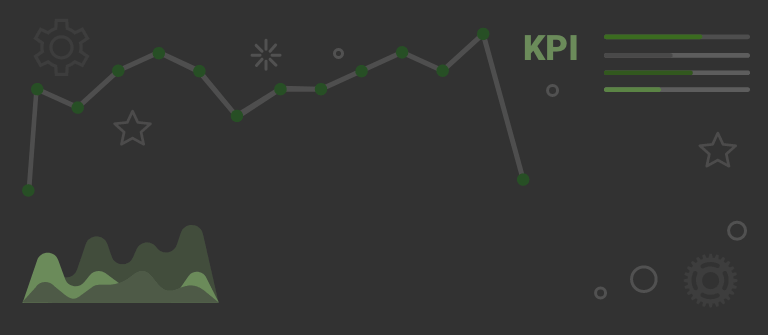

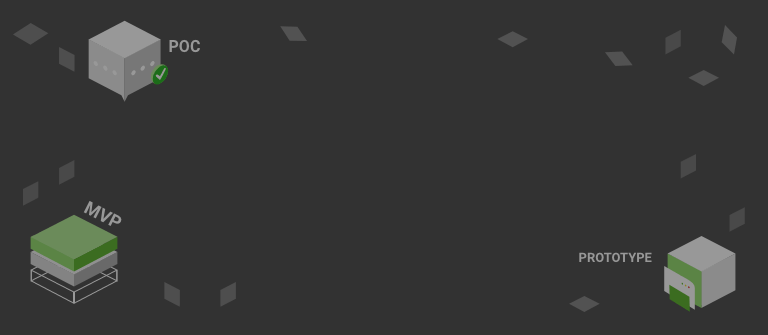
 Unit 1505 124 City Road, London, United Kingdom, EC1V 2NX
Unit 1505 124 City Road, London, United Kingdom, EC1V 2NX

Comments
Leave a comment